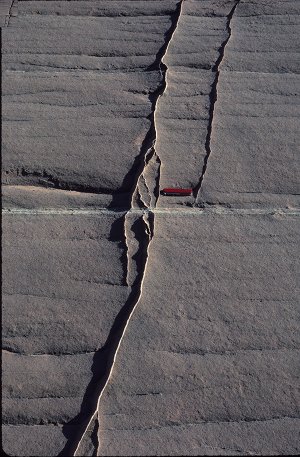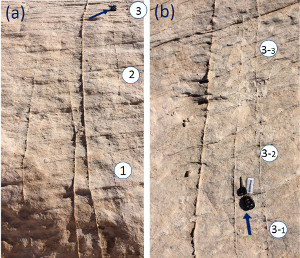| |||||||
|
|
|||||||
|
|
|||||||
| Echelon Volumetric Bands | |||||||
|
It is not easy to observe evidence at outcrops for volumetric and shear bands. Figure 1 is likely a volumetric deformation band considering that no offset of nearly horizontal thin layers is detectable. However, a minute amount of shearing in-and-out-of the surface of exposure cannot be ruled out.
Figures 2(a) and (b) are a series of compactive volumetric bands in Aztec Sandstone exposed west of the Willow Tank parking lot at Valley of Fire State Park, Nevada. The photo in (a) shows a cross section exposed at a near vertical surface of erosion, on which the segments were numbered 1 to 3. The photo in (b) shows the map view on a near horizontal surface of a close by exposure on which three lateral segments along the third segment are identified. It is concluded that at least at this location, the bands are discontinuous in three dimensions and no evidence for shearing along the bands is detectable by the naked eye on any plane of exposure. | |||||||
| Reference: |
|||||||
| Aydin, A., Borja, R., Eichhubl, P., 2006 |
|||||||
|
Readme | About Us | Acknowledgement | How to Cite | Terms of Use | Ⓒ Rock Fracture Knowledgebase |
|||||||

